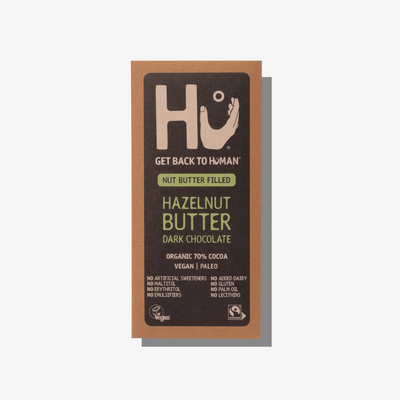
What Gardening Means to Me
Hi, I’m Lavender. I’m a 28-year-old statistician and gardening novice from Northampton, UK.
My interest in gardening was non-existent before 2020, and lockdown was the reason why I initially started my green-fingered journey. I had much more time than usual to focus on transforming my neglected garden, which led me to realise how rewarding and energising gardening could be! I’ve since developed an interest in growing flowers, fruit and vegetables from seed, as well as finding creative tips to jazz up my garden space.
I’m still very much a beginner and I’m learning all the time – but here are a few of my initial tips about gardening and growing plants, whether that be indoors on your kitchen windowsill, out on a balcony, or in a proper garden. It’s easy, rewarding and relaxing - I would recommend giving it a go.
My Top 5 Gardening Tips
1) Think about how much time, space and experience you have when beginning.
If you’re new to gardening, my suggestion is to start small to see if you can manage it, and then slowly build yourself up over time. There’s nothing worse than overwhelming yourself with too many plants and not enough time to harvest or water them. At a minimum, your essentials are soil, water, sunlight and a pot for planting, so buy the basics and expand from there.
If you know you can’t commit a lot of time to caring for plants, then look for varieties that are hardy, self-sufficient and don’t need much watering!
2) Do some initial planning, and find ways to keep organised
Different plants need to be sown, pruned and harvested at different periods, so staying on top of this is key.
I’ve found it helpful to create an excel spreadsheet to record key information about my plants, as well as details of sowing and harvesting. You can often find this on the backs of seed packs, or through researching online (the RHS website is so helpful for this).
I’ve also made a seed box to organise seeds by the month they should be planted in, using a wooden box designed to store tea. Hopefully this will stop me feeling overwhelmed in future months (I have lots of seed planting planned for early 2021!)
3) Listen to your plants and research their needs
Gardening is a continuous experimental process and learning curve. Do your research and learn from your own experience!
Plants in the initial stages are vulnerable and need the right care, and not all your seeds will always survive or produce and optimum harvest. It’s okay though, adjust your methods and try again next time. You’ll get the hang of it quickly!
For each plant a few things you need to think about include:
- What soil does it like? (Alkaline, acidic, or mixed?)
- How much sunlight/shade does it need?
- What direction does it prefer to face?
- How hardy is it? (Will it need to be overwintered?)
- How tall does it grow? (You might need a wall or trellis for support!)
- Is it prone to disease? (e.g. aphids, fungus)
4) Pick hardy plants or be ready for overwintering
Of the plant groups, perennials will flower every year and annuals only last the season. Some perennials can be evergreen (or semi-evergreen,) staying green-leaved across the year.
This doesn’t necessarily indicate hardiness though. You can get ‘hardy annuals’ (e.g. nigellas) which will survive cold winters, and non-hardy perennials which won’t. Research is key!
Depending on your plant type and its hardiness, it may need keeping indoors over winter to survive the harsh weather, so make sure you prepare a space to do so. Alternatively, you can prepare a greenhouse for overwintering by adding heaters and bubble-wrap around the pots to ensure they stay warm and protected (but for a beginner, keeping indoors is probably the easiest option).
5) Think about the senses
This is the most fun tip - make your garden space a haven of your dreams!
Sight - Think about the colour schemes of your flowers and planters to match. I naturally prefer cooler shades (e.g. mint, silver, cool blue, pale gold, lilac), but I have a warm orange wall which balances out my choices. Apparently, bees also prefer flowers of the blue colour spectrum, and can even detect UV markings on flowers that we can’t see!
Scent - A herb garden is a cheap and lovely way to add scent. Lavender, mint and rosemary are my favourites. Lots of flowers also have lovely scents. My favourites are roses and jasmine!
Taste - Fruit trees are fantastic for garden snacks, and you can get mini ones (e.g. blueberry, cherry, raspberry) for a small space. I also really like rhubarb, and recently had a go at making gin grown from rhubarb in my boyfriend’s garden which was delicious. Growing any sort of fruit and veg is also fun!
Sound – A water fountain, windchime and even a table to attract birds are a great way to add in relaxing background sound. Some types of plants also absorb noise pollution if you live near a busy road.
Touch – I like to be able to sit down in the garden comfortably and chill in the evening. In my garden I’ve added a bookshelf bar (as I love to read and enjoy a garden tipple from time to time!), as well as a bench and comfy chairs to sit on. You can go beyond this and accessorise things to touch and look at to make an area feel homely and personal to you. How about lights, mirrors, dream catchers or bunting?
OVERALL:
Gardening is a lot of fun for any level of experience, space or time – all you need is passion and some dedication. I hope you can enjoy it as much as I do.
Written by @the.lavender.garden

















